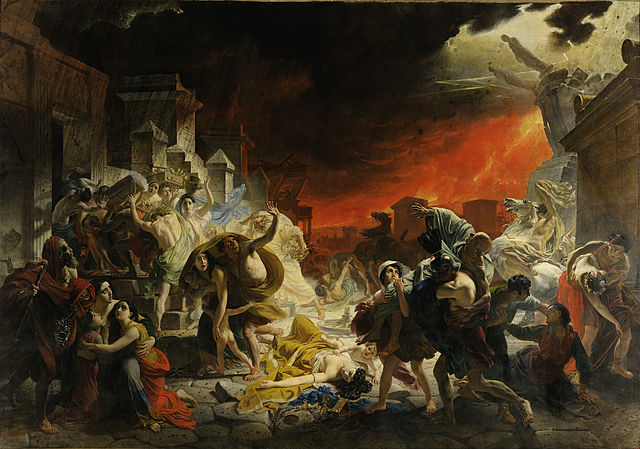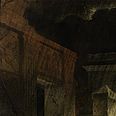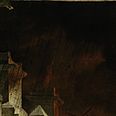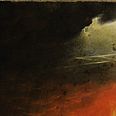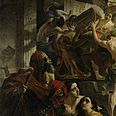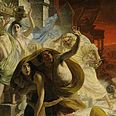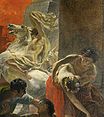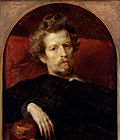 |
This is a file from the Wikimedia Commons. Information from its description page there is shown below.
Commons is a freely licensed media file repository. You can help.
|
|

|
|

|
This is a featured picture on Wikimedia Commons ( Featured pictures) and is considered one of the finest images.
If you have an image of similar quality that can be published under a suitable copyright license, be sure to upload it, tag it, and nominate it.
|
|
|
 |
A higher resolution version of this image is available as a set of tiles. Click on the grid below to access these.
|

Summary
|
Warning
|
Some browsers may have trouble displaying this image at full resolution: This image has a large number of pixels and may either not load properly or cause your browser to freeze. |
Interactive large-image-viewer ( non-Flash) |
| Artist |
|
| Title |
The Last Day of Pompeii |
| Object type |
Painting |
| Description |
English: Briullov visited Pompeii in 1828 and made sketches depicting the AD 79 Vesuvius eruption. The painting received rapturous reviews at its exhibition in Rome and brought Briullov more acclaim than any other work during his lifetime. The first Russian artwork to cause such an interest abroad, it inspired an anthologic poem by Alexander Pushkin, and the novel The Last Days of Pompeii by Edward Bulwer-Lytton. It depicts a classical topic but exhibits characteristics of Romanticism as manifested in Russian art, including drama, realism tempered with idealism, interest in nature, and a fondness for historical subjects. A self portrait is in the upper left corner of the painting, under the steeple, but not easy to identify.
|
| Date |
(1830 - 1833) |
| Medium |
oil on canvas |
| Dimensions |
Height: 456.5 cm (179.7 in). Width: 651 cm (256.3 in). |
| Current location |
State Russian Museum  |
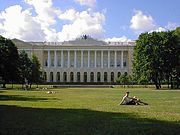 |
| Native name |
Государственный Русский музей |
| Location |
Saint Petersburg, Russia |
| Coordinates |
59° 56′ 19.47″ N, 30° 19′ 56.59″ E   |
| Established |
1895 |
| Website |
www.rusmuseum.ru |
|
|
|
| Accession number |
AP-SRM-001 |
| Exhibition history |
English: Exhibited in Rome and then transported to the Louvre in Paris. Commissioned by Prince Anatole Demidov, who donated it to Nicholas I of Russia, who displayed it at the Imperial Academy of Arts. Transferred to the Russian Museum at its opening in 1895.
|
| Source/Photographer |
Google Art Project: Home - pic Scaled down from second highest level of zoom. |
Licensing
This is a faithful photographic reproduction of an original two-dimensional work of art. The work of art itself is in the public domain in its source country for the following reason:
| Public domainPublic domainfalsefalse |
 |
This work is in the public domain in the United States, and those countries with a copyright term of life of the author plus 100 years or less. |
|
This file has been identified as being free of known restrictions under copyright law, including all related and neighboring rights.
|
The work of art itself is in the public domain in the United States for the following reason:
| Public domainPublic domainfalsefalse |
 |
This work is in the public domain in the United States because it was published (or registered with the U.S. Copyright Office) before January 1, 1923. Public domain works must be out of copyright in both the United States and in the source country of the work in order to be hosted on the Commons. If the work is not a U.S. work, the file must have an additional copyright tag indicating the copyright status in the source country.
|
The official position taken by the Wikimedia Foundation is that faithful reproductions of two-dimensional public domain works of art are public domain, and that claims to the contrary represent an assault on the very concept of a public domain. For details, see Commons:When to use the PD-Art tag.
This photographic reproduction is therefore also considered to be in the public domain. Please be aware that depending on local laws, re-use of this content may be prohibited or restricted in your jurisdiction. See Commons:Reuse of PD-Art photographs.
|
File usage
The following pages on Schools Wikipedia link to this image (list may be incomplete):
This file contains additional information, probably added from the digital camera or scanner used to create or digitize it. If the file has been modified from its original state, some details may not fully reflect the modified file.
Schools Wikipedia was created by children's charity SOS Children. SOS Childrens Villages helps more than 2 million people across 133 countries around the world. There are many ways to help with SOS Children.

